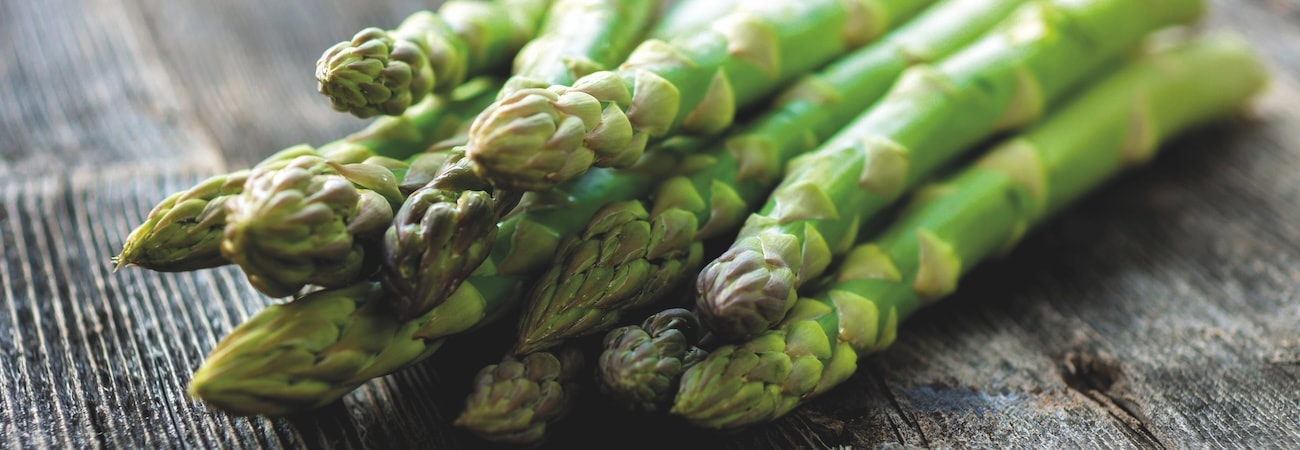
Ann’s Almanac – May
A recent poll amongst my colleagues confirmed that May is almost everyone’s favourite month. Increased sunshine, trees greening-up, flowers blooming and, on the veg plot, fresh produce like asparagus, broad beans, radish, salad leaves and herbs bring a welcome end to the ‘hungry gap’. I also love to see the hedgerows covered in clouds of snowy hawthorn and elderflower blossoms at this time of year. It’s a great opportunity to start making elderflower cordial and champagne to enjoy in the not too distant summer!
When the sun starts to shine, the temptation is to whizz all indoor grown plants outside and get them in the ground. Don’t put them out until the last danger of frost has passed, and do make sure they’re fully hardened off first. The shock of going straight from a nice warm pot to the cold soil can give plants such a fright that they simply put the brakes on and stop growing. So, introduce them to the outside slowly, over a 10-day period, and keep some horticultural fleece handy, just in case. Remember, the weather in May is fickle. This is the month that’s often caught me out and a late frost has damaged the tops of my early potatoes!
The glory of gardening: hands in the dirt, head in the sun, heart with nature. To nurture a garden is to feed not just the body, but the soul.
– Alfred Austin.
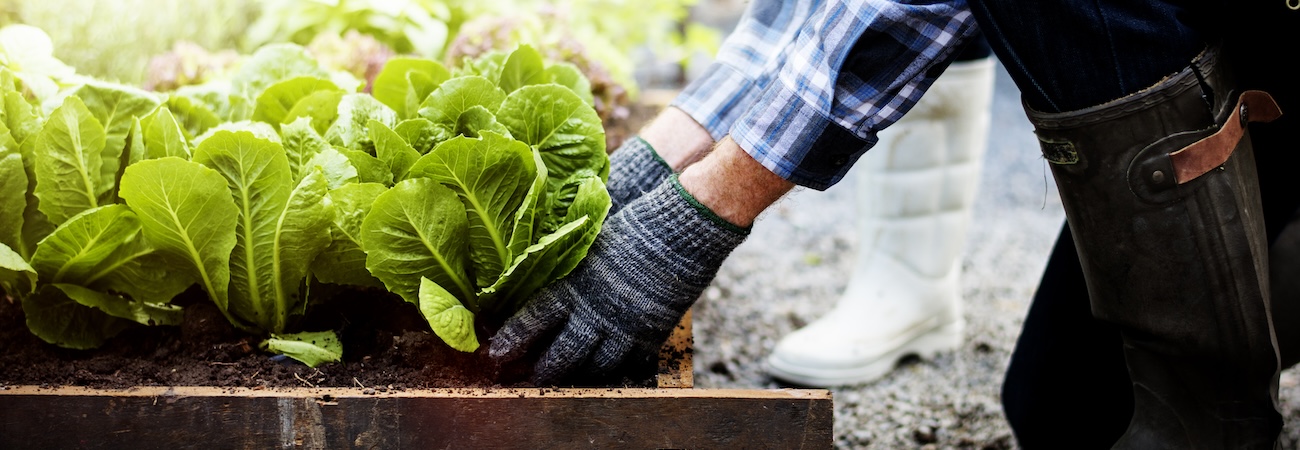
Jobs to tackle this month
My top tasks for May include:
- Vegetables like sweetcorn seeds and French bean seeds can be direct sown this month. Put supports in place first for climbing bean varieties.
- Veg plants raised indoors can be gradually hardened off, ready for planting out.
- If you don’t have space to start veg from seed, check out our range of veg plants. They’re a quick way to get your plot planted quickly.
- Earth-up your potatoes once the stems are about 20 cms tall. This will give you a larger crop.
- Start harvesting your asparagus spears.
- Onions and garlic planted last autumn will start to swell now so keep them weed free and well-watered.
- Regularly water newly planted trees and pot-grown fruit plants.
- Lawns will need cutting more often from now on, but I also like to mow a path through longer grass and enjoy the wildflowers.
- Your plants need bees so include as many pollinator-friendly flowers as possible.
- Vine weevil is a major enemy this month so consider using Nemasys Vine Weevil Killer or prepare to spend your evenings outside, picking them off by hand.
- Deadhead tulips and give them, and your daffodils, a feed.
- Once they’ve finished blooming, prune spring-flowering shrubs like Forsythia, Ribes and Spiraea. This encourages lots of flowers next year.
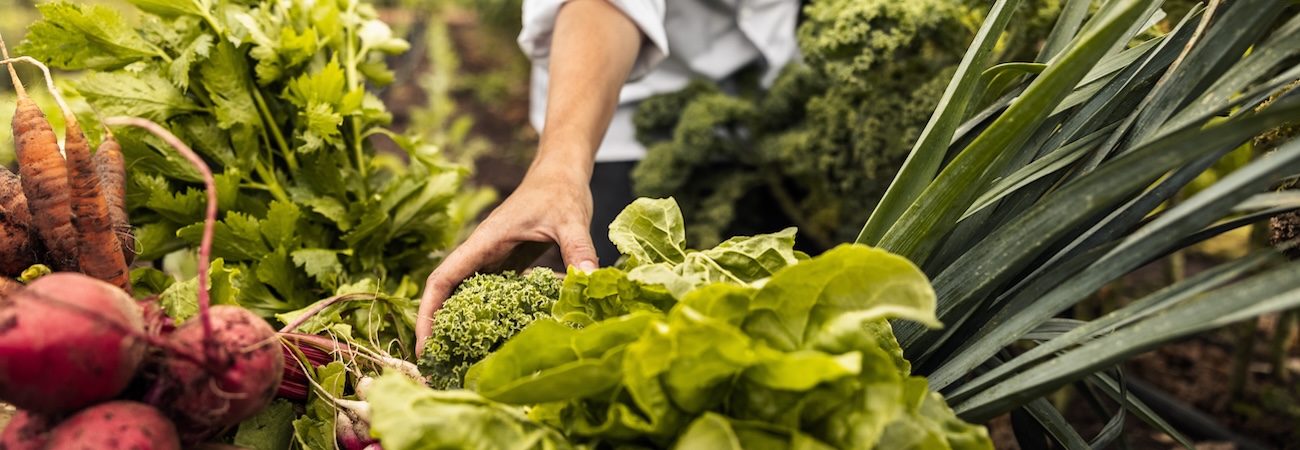
From plot to plate
Here are some of the delicious crops I harvest in May:
- Asparagus: Home-grown asparagus is a real treat in May and, productive for about 20 years, an asparagus bed is a worthwhile investment. Young and tender spears can be eaten raw, chopped and simply dressed with lemon juice, olive oil and garlic. Alternatively, roast them in a hot oven with a drizzle of olive oil, some sea salt and thyme until lightly charred, and serve with a soft egg for dipping. Asparagus and wild garlic are a good match and make a fine risotto. Instead of discarding the tough ends, use them to make a rich stock.
- Beetroot: I was thrilled to see this vegetable steal the limelight on MasterChef when one of the eventual winners, Kenny Tutt, prepared scrumptious, slow-cooked beetroot steaks. Although it may seem new and exciting, the variety he used, Beetroot ‘Rouge Crapaudine’, is, in fact, the oldest variety still around!
- Salad leaf mix: Cut-and-come-again mixes are a great windowsill crop. They take no time to germinate and can be snipped off as microgreens to add to salads and sandwiches. Sprinkle over quiches, pizzas and stir through grains for a welcome splash of colour and texture. Keep sowing through the summer for a regular supply.
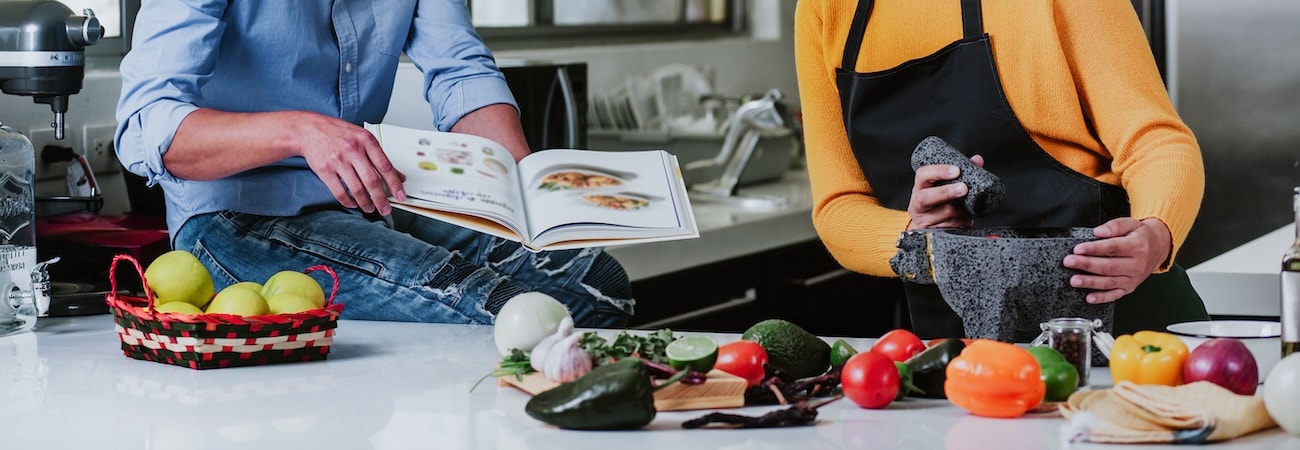
Recipe of the month
Ann’s Kale Pasta Sauce Recipe
You will need:
- 250g kale, washed, shredded and tough stalks removed
- 350g pasta
- 250ml single cream or creme fraiche
- 2-3 cloves of minced garlic
- 1 lemon, zested
- 50g parmesan
- 2 tablespoons pine nuts
- 1 cup of reserved pasta water or chicken stock
- Salt & pepper
Method:
- Cook your pasta according to the packet instructions.
- Saute the minced garlic in a large frying pan until golden.
- Throw in the shredded kale and stir until softened.
- Add the pine nuts, but don’t allow them to burn.
- Add the cream, lemon zest and grated parmesan and season with salt and pepper. Gently warm through.
- Add some reserved pasta water if the sauce is too thick.
- Blitz the sauce in a blender if you prefer it smooth or simply pour it over the pasta to serve.
Fancy growing something new?
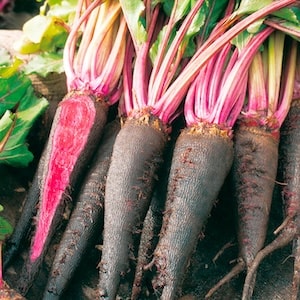
We all have our favourites – tried and trusted varieties of fruit and veg that we grow each and every year. But it’s also fun to try something new. Here’s my suggestion:
Beetroot ‘Rouge Crapaudine’ is an ancient variety that has been grown for about 1000 years! The tapered roots are almost black in colour and the rough skin resembles tree bark. Red-tinged stalks can be eaten in salads, while the sweet flesh is highly sought-after by chefs for its superior flavour.
You may also be interested in
- Flower seeds to sow in May
- Vegetable seeds to sow in May
- Ann’s allotment and gardening guide – April
- Ann’s allotment and gardening guide – June
Lead image: Asparagus officinalis Mondeo from Dobies
